The excavation
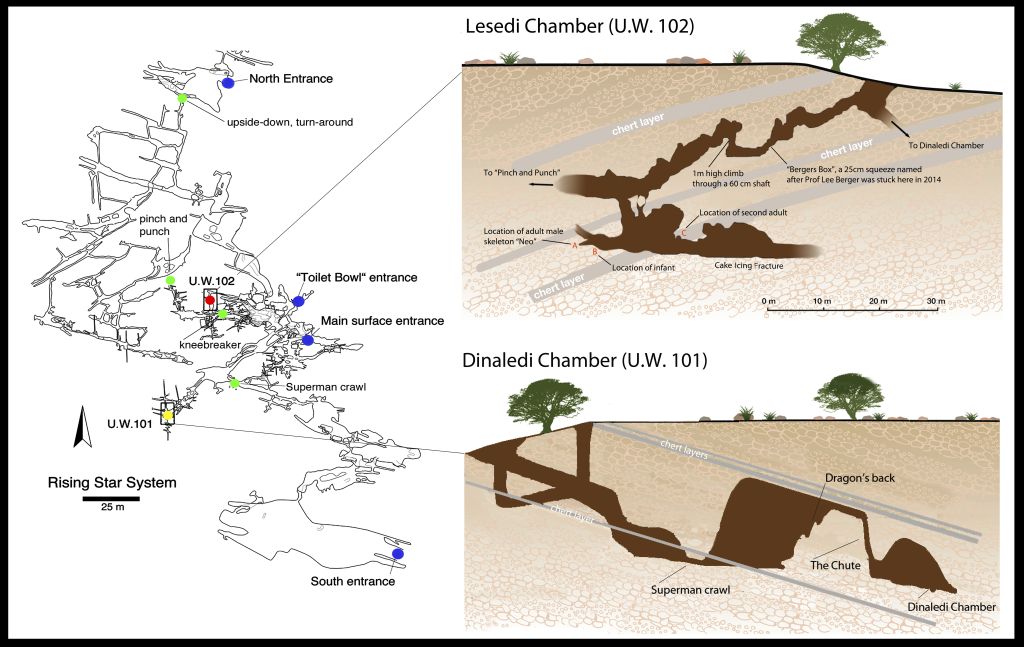
In early November 2013, less than two months after the fossil discovery, the six female “Underground Astronauts” arrived at Rising Star. They brought with them a range of skills in palaeoanthropology and archaeology, but also experience in caving, climbing, the outdoors, and even first aid.
The fossil chamber was named the “Dinaledi Chamber”, meaning “Chamber of Stars” in seSotho. Once within the chamber, the scientists scanned the excavation surface with an Artec Eva 3D scanner before cautiously removing the loose soil from around the fossils, using delicate tools like plastic spoons, paintbrushes, and toothpicks. Millimetre by millimetre, the surrounding soils were removed, revealing the bones nestled within. These fragile fossils were then scanned, labelled, and photographed before they were transported carefully back up the Chute and through the winding passages to the surface.
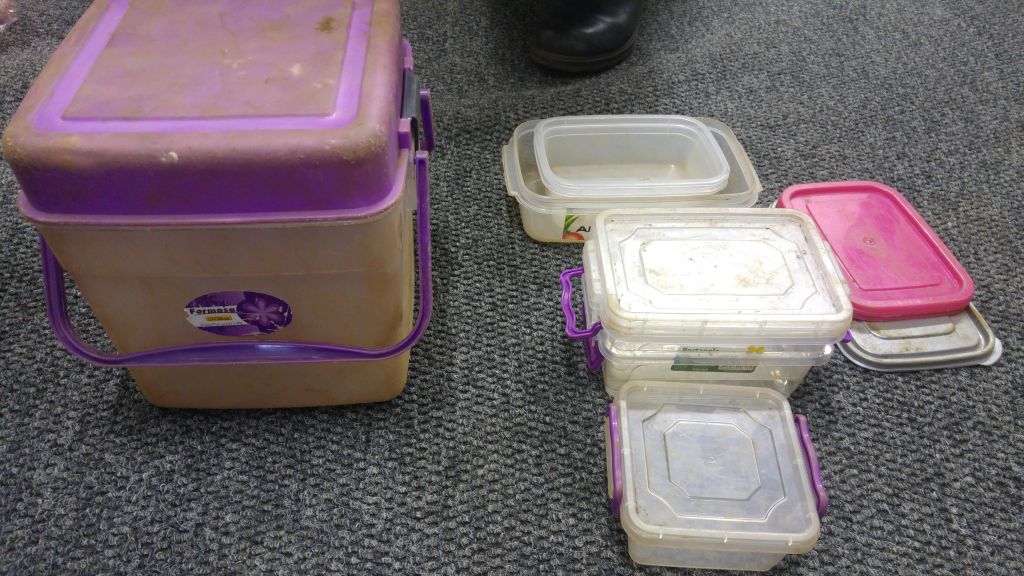
Packing the fossils
The scientists carefully placed each fossil into a clear plastic bag and then into a second bag with a label. That label connected the fossil back to the excavation, using the excavator’s name, the site number, a unique number for that bone, photo numbers, and a tentative identification. These packets were then wrapped in bubble wrap and placed in plastic containers for the long and difficult journey out of the
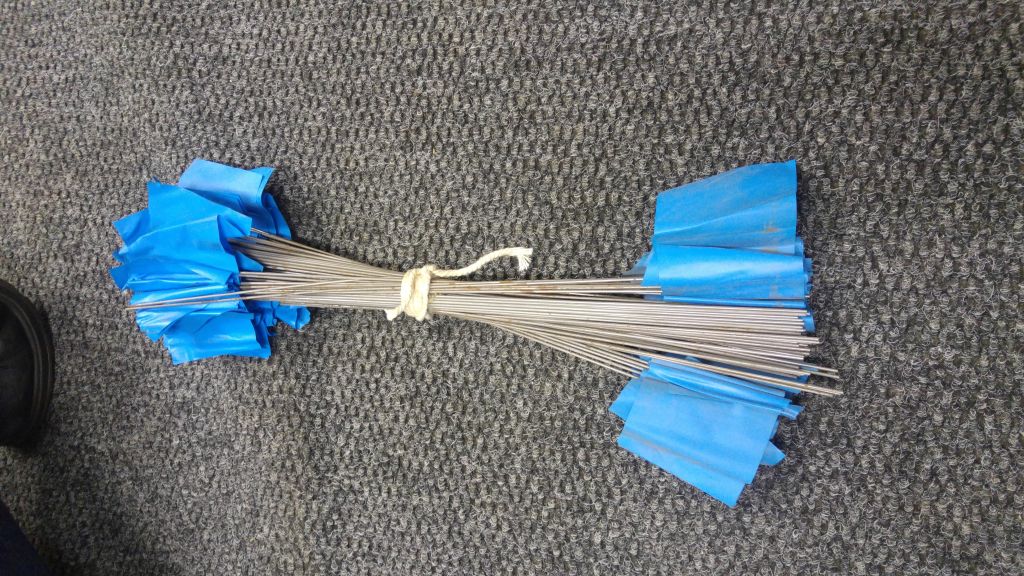
Flags for marking fossils
When the first scientists entered the Dinaledi Chamber, there were fossils everywhere. The team used colourful flags to mark every bone fragment on the surface to prevent them being overlooked or damaged. By the time they were finished, the chamber was a sea of colour but it ensured every fossil was collected.
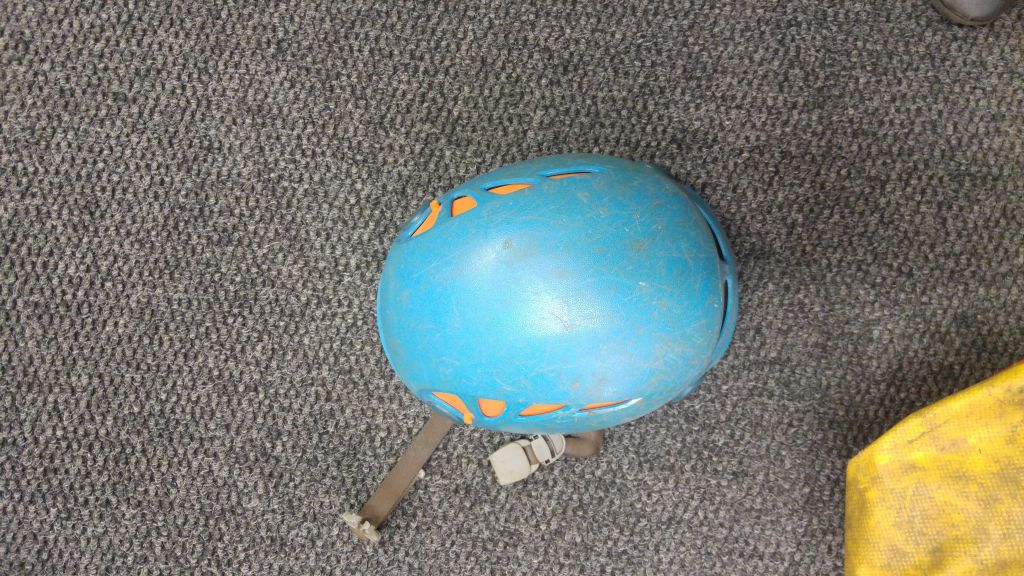
Caving gear Helmet and other gear too
Cavers use a variety of specialised equipment when exploring underground. Light is essential in the dark recesses, so every caver wears a bright headlamp and carries extra batteries. Helmets protect cavers from rock falls and knocks to the head, while safety harnesses protect them from falls when climbing with the aid of ropes. The equipment displayed here was used during the original Rising Star Expedition in 2013.
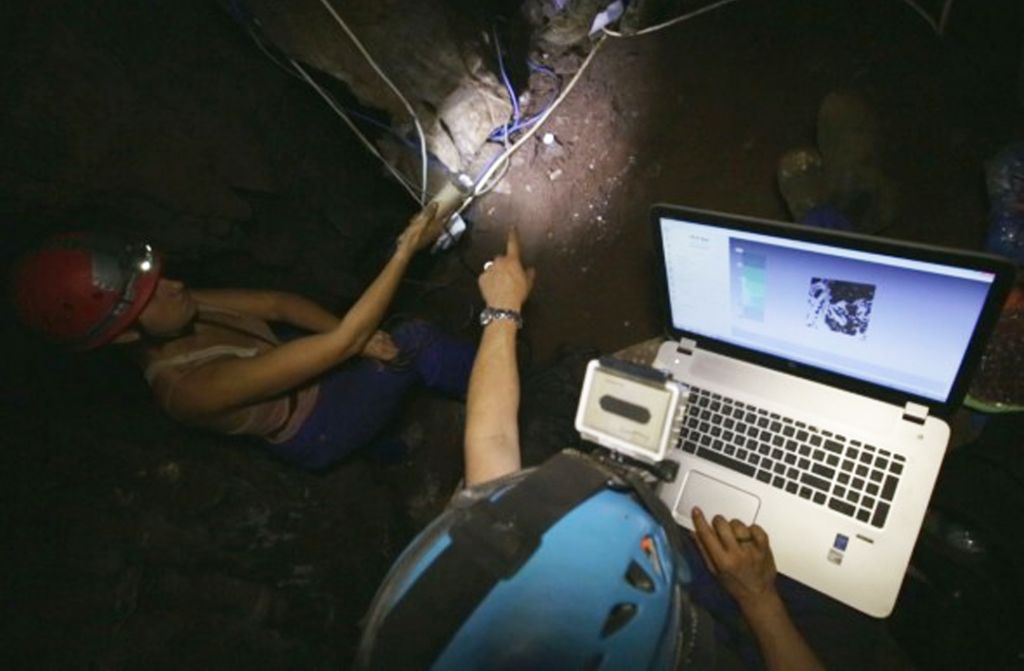
Artec Eva scanner
Looking a little like a clothing iron, the Artec Eva™ can produce high-resolution three-dimensional scans of almost any object or surface. During the Rising Star excavations, these scans recorded detailed information about each fossil’s position in the excavation area, providing important clues as to how the bones got to their final location.




